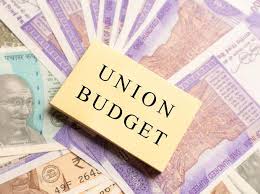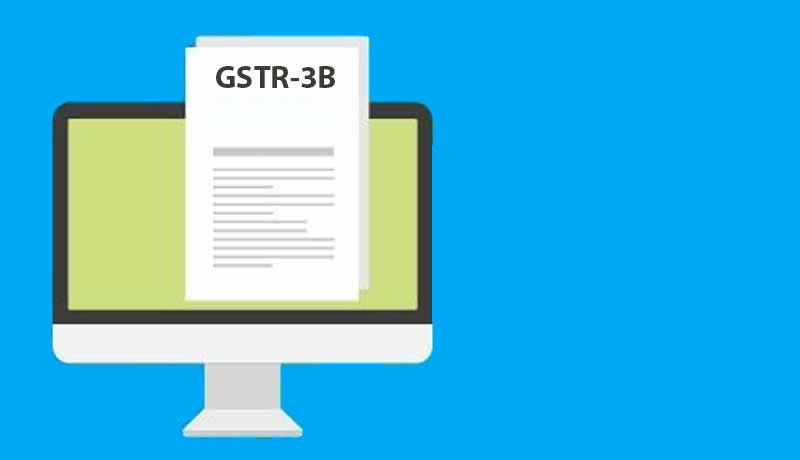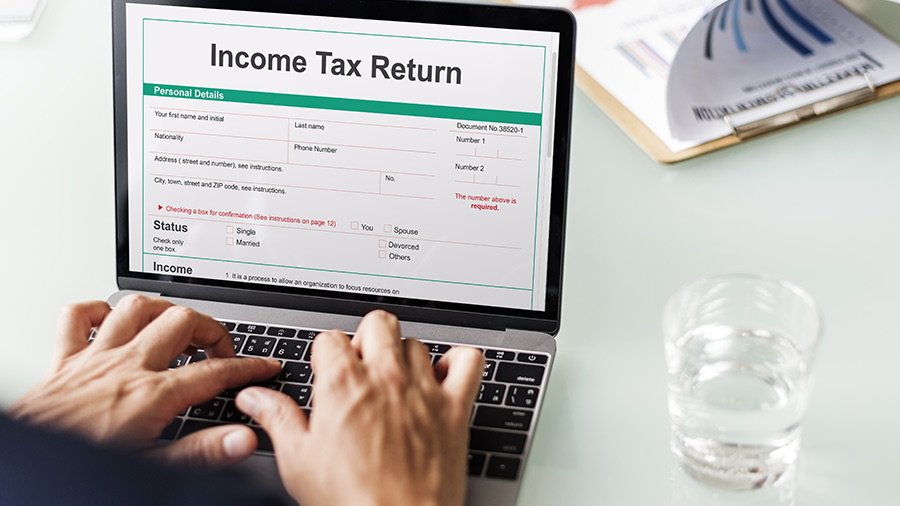FM said, while presenting the Union Budget, 2023 that we are also making the new income tax regime as the default tax regime. However, citizens will continue to have the option to avail the benefit of the old tax regime.
The amount of taxes you pay is likely to change ahead. Finance Minister Nirmala Sitharaman in her budget speech has made key major announcements for hard-working middle-class citizens who pay taxes. These are called new income tax slabs and the Centre has decided to make it a default tax regime. However, the old income tax slabs regime has not been abolished as well. Instead, taxpayers now have the option between the two regimes when paying for their taxes. But which one is better?
What is the new income tax slabs regime?
Firstly, FM cleared the air over the rebate on an income of ₹5 lakh which is free from taxes in both old and new tax regimes. This will change ahead!
Sitharaman has proposed to make the exemption limit to ₹7 lakh under the new tax regime — which means that up to this income amount a taxpayer will not be required to pay any tax.
Further, she proposed of change the tax structure in this regime by reducing the number of slabs to five and increasing the tax exemption limit to ₹3 lakh.
Hence, the new revised tax rates are:
– Income slab of ₹3 lakh: No tax levied
– Income of ₹3 lakh to ₹6 lakh: 5% tax rate
– Income of ₹6 lakh to ₹9 lakh: 10% tax rate
– Income of ₹9 lakh to ₹12 lakh: 15% tax rate
– Income of ₹12 lakh to ₹15 lakh: 20% tax rate
– Above ₹15 lakh income: 30%.
Additionally, the FM has proposed to reduce the surcharge rate from 37% to 25% on the highest tax rate in the country of 42.74% — which is among the highest in the world. With the reduction in the surcharge rate, the maximum rate would be 39%.
Also, FM proposed to extend the benefit of the standard deduction to the new tax regime. Each salaried person with an income of ₹15.5 lakh or more will thus stand to benefit by ₹52,500.
But FM also said, “we are also making the new income tax regime as the default tax regime. However, citizens will continue to have the option to avail the benefit of the old tax regime.”
In the previous new tax regime, no tax was levied on income to ₹2.5 lakh. Other tax rates were:
– Income ₹2.5 lakh to ₹5 lakh: 5% rate
– Income ₹5 lakh to ₹7.5 lakh: 10% rate
– Income ₹7.5 lakh to ₹10 lakh: 15% rate
– Income ₹10 lakh to ₹12.5 lakh: 20% rate
– Income of ₹12.5 lakh to ₹15 lakh: 25% rate
– Above ₹15 lakh income: 30% rate
What are old income tax slabs?
– Income up to ₹2.5 lakh: Exempted from tax
– Income of ₹2.5 lakh to ₹5 lakh: 5% tax rate
– Income of ₹ ₹5 lakh to ₹10 lakh: 20% tax rate
– Income of above ₹10 lakh: 30% tax rate
Which one is better?
Before understanding which is a better regime, you need to first understand which factors will be taken into consideration for calculation of income tax amount.
According to India’s leading tax and financial services software platform, Clear’s calculation, without any deduction claims, the new tax regime is beneficial. A taxpayer saves more taxes under the new tax regime. It needs to be noted that this would be without any deductions that are available in old regime.

Without any deduction claims, the new tax regime is beneficial. (Clear’s Calculation)
In the older regime, a tax rebate is applicable till income of ₹5 lakh under section 87A of the IT Act. The maximum rebate comes to around ₹12,500. Now, this rebate is added to income tax payable above ₹5 lakh. Hence, only the income class of ₹5 lakh salary, does not pay any taxes.
Examples:
For example, Mr. XYZ has a salary of ₹10 lakh and decided to choose the old tax regime. Let’s suppose, tax deductions under sections 80C, 80D, and 24 (b) cumulatively come to around ₹2.5 lakh. Taking into consideration the deduction amount, the taxable amount is around ₹7.5 lakh ( ₹10 lakh minus ₹2.5 lakh tax benefits).
Tax amount on income of ₹7.5 lakh:
Till ₹2.5 lakh income: Nil Tax
Income tax slab between ₹2.5 lakh to ₹5 lakh: 5% tax rate on ₹2.5 lakh (the difference between ₹2.5 to ₹5 lakh) which comes to around ₹12,500
Income tax slab between ₹5 lakh to ₹10 lakh: 20% tax rate is levied on the remaining ₹2.5 lakh, taking the amount to ₹50,000
Taking the above into consideration, the tax amount that needs to be paid would be ₹62,500 ( ₹12,500 + ₹50,000).
But if deductions are not included in the old regime:
– Till income of ₹2.5 lakh, no tax will be levied.
– ₹12,500 tax between income bracket of ₹2.5 lakh to ₹5 lakh
– 20% levied on the remaining ₹5 lakh which falls under the income tax bracket of ₹5 lakh to ₹10. The tax amount here comes to around ₹1 lakh.
Taking these into consideration, the tax payable amount would be ₹1,12,500 in the old regime.
Under the revised new tax regime:
Taking the same example into consideration, the taxable amount will be ₹10 lakh.
– ₹0 to ₹3 lakh: No Tax
– ₹3 lakh to ₹6 lakh: Tax rebate of ₹15,000 (5% under section 87A)
– ₹6 lakh to ₹9 lakh: 10% tax rate which leads to ₹30,000
– ₹9 lakh to ₹12 lakh slab: The remaining ₹1 lakh amount falls under this bracket, hence, the tax amount here would be ₹15,000
The tax amount payable would be ₹60,000 ( ₹15,000 + ₹30,000 + ₹15,000) in the new revised regime.
Hence, without the tax deduction amount claimed, the new regime is much better for taxpayers to save on taxes. But if deductions are included, then old regime is more beneficial.

For example: If your salary comes to around ₹20 lakh. Under this salary income, the highest tax rate of 30% is same for both new and old regime, however, the tax amount varies.
Old regime:
Under the old regime, without claiming tax deduction benefits, here’s how your tax amount will be.
Income till ₹2.5 lakh: No tax
Tax on income slab from ₹2.5 lakh to ₹5 lakh: ₹12,500 payable (5% of ₹2.5 lakh).
Tax on income slab from ₹5 lakh to ₹10 lakh: Tax amount to come around ₹1,00,000.
Above ₹10 lakh: 30% levied on the remaining amount of ₹10 lakh — the amount comes to around ₹3,00,000.
The tax payable amount is ₹4,12,500 ( ₹12,500 + ₹1 lakh + ₹3 lakh) on a salary of ₹20 lakh in the old regime.
New revised regime:
Same example:-
No tax till ₹3 lakh
– ₹15000 between income slab of ₹3 lakh to ₹6 lakh (5%)
– ₹30,000 between income tax slab of ₹6 lakh to ₹9 lakh (10%)
– ₹45,000 between income slab of ₹9 lakh to ₹12 lakh (50%)
– ₹60,000 between income slab of ₹12 lakh to ₹15 lakh (20%)
– ₹1,50,000 on above ₹15 lakh (30% on ₹remaining ₹5 lakh)
The total tax payment comes to around ₹3 lakh ( ₹15,000 + ₹30,000 + ₹45,000 + ₹60,000 + ₹1.5 lakh)
Similar is the case with other income salaries.

New tax regime is likely to be benefit lower earnings and very high income class. (Clear’s calculations)
From the above it can be seen that individuals earning salaries upto ₹7 lakh are biggest beneficiary in new regime.
Archit Gupta, Founder, and CEO, Clear said, “taxpayers who want to avoid the hassles of claiming traditional deductions, who usually do not opt for HRA or claim other reimbursements via an employer or do not want to invest in traditional 80C, may now see the new regime as an option.”
But Gupta also added, “Taxes are lower yet old regime may still play out better for taxpayers, all depends on how well structured their CTC is, to allow for reimbursements and claims and how well they can maximise the exemptions available to them. Nevertheless, the messaging is clear, the government is aiming to move towards the new tax regime. “Here’s an example with deductions in the old regime and without deductions in the new regime as per Clear:

Further, for the higher-income class, the new tax regime is likely to be better. Clear explained with an example that for taxpayers with ₹10 crore income, the new regime will provide a benefit of ₹38,87,324 over the old regime.

The high income earners likely to make massive savings from the new tax regime. (Clear’s Calculation. )
Even if taken deductions on an income of ₹2 crore, the new regime will provide a benefit of ₹81,626 over the old regime. This is after claiming both 80C and 80CCD(1B) deductions in the old regime.

As per Clear, however, if he/she exhausts all benefits, old may be slightly better. The tax platform believes that it seems the change will benefit the low earners and the very high earners.
Abhishek Soni, Co-founder & CEO, of Tax2win, a Fisdom company said, “as expected, this year after a long wait, the budget finally focused on the middle-class/ salaried class/ small business category taxpayers of India. The introduction of new slabs with lesser tax rates under the new tax regime as well as the announcement of introducing a single simplified common ITR form in the future, clearly shows the government’s objective to simplify the income tax for the common people. For small businesses and professionals also, the threshold limit for presumptive business income has been increased, which will not just reduce the compliance burden for them but ensure more people do the compliance. Further, no tax is levied up to 7 Lakh of income, a big relief for millions of salaried individuals.
“Also, Anand K Rathi, Co-founder, MIRA Money said, “Happy that the Government didn’t give in to the pressure from the middle class. Though there has been a revision in the income tax slabs for the salaried class, the income Tax regime needs a massive change. We need a clear rollout plan toward a simpler, more effective, and inclusive income tax regime.
“Further, Ankur Maheshwari, Chief Financial Officer, Freo said, “a huge relief has come in the form of personal taxes, the New Tax regime which is now also the default tax regime has been incentivised significantly to improve adoption. The Budget has provided a playing field for taxpayers by increasing rebates and ensuring that there is no income tax levied up to 7 lakh rupees in income. Additionally, the revised tax slabs under the new tax regime and the extension of the standard deduction will ensure that the salaries class will have more liquid cash which will directly impact the consumption and investment.”
Source: livemint.com
***
Don’t miss the next GST Update / Article / Judicial pronouncement
Subscribe to our newsletter from FREE to stay updated on GST Law
Resolve your GST queries from national level experts on GST free of cost.
TW Editorial Team comprises of team of experienced Chartered Accountants and Advocates devoted to spread the knowledge of GST amongst the various stakeholders.




